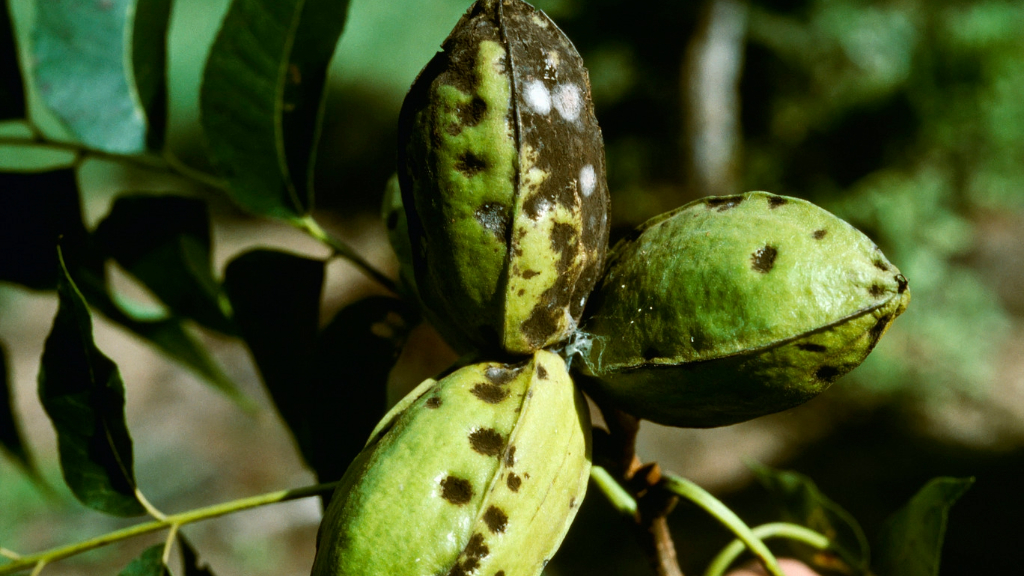Pecan Tree Problems: Common Mistakes When Growing Pecans


Pecan trees are tall and beautiful additions to the backyard, plus mature trees produce all those delicious nuts. No tree this spectacular grows well without a little effort though. Before you invite a pecan tree into your garden, you'll want to know about pecan growing problems that others have experienced. Avoid these same mistakes when growing pecans by understanding potential pecan tree problems in advance. Read on for info and tips to help you get started.
Pecan Tree Problems
Pecan trees (Carya illinoinensis) are native to North America and have been cultivated for many years for their delicious nuts. Some 200,000 tons of pecans are harvested for the market annually, but many pecan trees also make their way into residential yards. That is, homeowners choose the pecan tree as an imposing shade tree for their yards. Pecan trees thrive in USDA plant hardiness zones 5 through 9.
If you want to avoid mistakes when growing pecans, keep in mind the biggest pecan issue:the tree's mature size. Some types of pecan trees soar to heights over 100 feet (30 m.) tall. Since these trees can live (and bear nuts) for over 300 years, getting them planted right is kind of an investment.
Many a homeowner has created their own pecan tree problems by not thinking through the size the tree will grow. Planting a young pecan in a small yard or too close to the house makes for serious pecan growing problems over time.
Pecan Growing Problems
Even if you have a yard that can handle a pecan tree, you'll need to site the tree properly. Each pecan tree should have a growing spot at least 30 feet (9 m.) from any other tree. It needs to be some 20 feet (6 m.) from your home or other structures.
In addition, don't make the mistake of planting your pecan in the shade or in wet soil. They need deep, well-draining soil to drop roots far enough to keep the tree upright and full sun to produce a heavy load of nuts.
Pecan Tree Care
Other common mistakes when growing pecans include planting problems. Do not think that planting the tree's root ball deeper will help it establish deeper roots. The planting hole should be no deeper than necessary to cover the roots. Otherwise, the pecan tree might settle or suffer root injuries that stifle growth. Don't hesitate to stake the young tree if necessary, to keep it straight.
Gardening tips, videos, info and more delivered right to your inbox!
Sign up for the Gardening Know How newsletter today and receive a free copy of our e-book "How to Grow Delicious Tomatoes".
Finally, avoid problems when growing pecans by watering the trees appropriately. Give them a deep drink at planting time. Then count on ten gallons of water per week for the first year in your backyard. Even after that, keep watering regularly for several more years to ensure healthy roots.

Teo Spengler is a master gardener and a docent at the San Francisco Botanical Garden, where she hosts public tours. She has studied horticulture and written about nature, trees, plants, and gardening for more than two decades. Her extended family includes some 30 houseplants and hundreds of outdoor plants, including 250 trees, which are her main passion. Spengler currently splits her life between San Francisco and the French Basque Country, though she was raised in Alaska, giving her experience of gardening in a range of climates.
-
 Grow ‘Karl Rosenfield’ Peony Plants For The Ultimate Frilly Border Beauties And Cut Flowers
Grow ‘Karl Rosenfield’ Peony Plants For The Ultimate Frilly Border Beauties And Cut FlowersFor frilly double magenta peony petals infused with a heady fragrance, grow ‘Karl Rosenfield’ peony plants. Here’s how to cultivate the ultimate plushy blooms
By Tonya Barnett
-
 10 Common Composting Problems That Can Spoil Your Garden Gold – Plus Easy Fixes
10 Common Composting Problems That Can Spoil Your Garden Gold – Plus Easy FixesLearn how to troubleshoot common composting issues before they ruin your stash – from bad smells and bugs to materials not breaking down as they should.
By Susan Albert